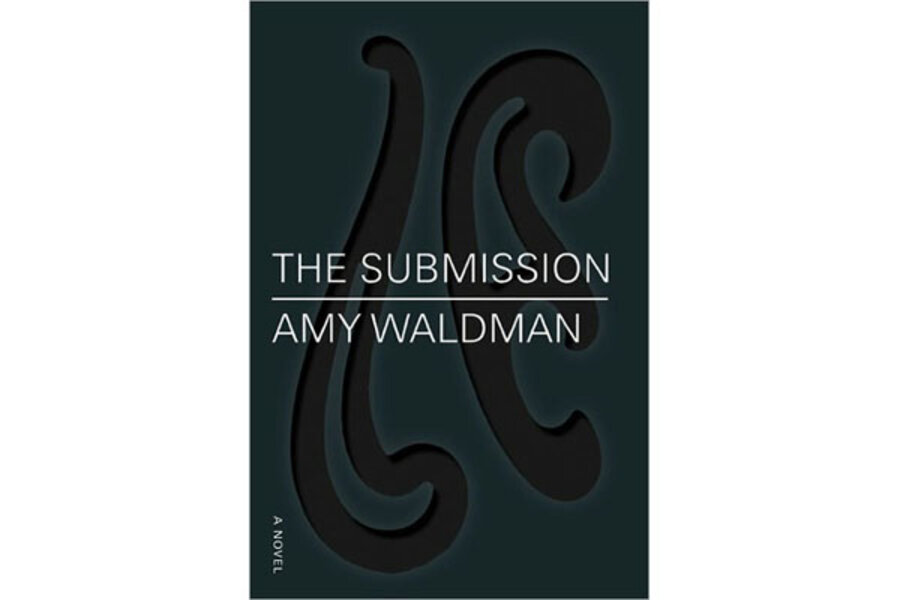The Submission
Loading...
We've arrived at the eve of the 10th anniversary of September 11 – a moment that, just like Indian summer, forces us into remembrance: inevitable reckoning of who we were then, and what's become of us since. I was a young architecture reporter, one suddenly faced, not with new plans for buildings or parks, but with watching New York City's iconic skyline ravaged. In the tragedy's blurry aftermath, I attended scores of planning meetings making frenzied notes about the early debates about rebuilding and memorial. The talk then – a strange mixture of ambition, bureaucracy, and pain – seemed to be about more than architecture. It was also about how landmarks and stories intersect, how space mediates grief, and how wounded cities – and wounded people – try to heal.
Debut novelist Amy Waldman steps gracefully into this moment with her novel The Submission. The former South Asia correspondent for the New York Times, Waldman boldly re-imagines an eerily realistic alternate history of the years after 9/11. It's risky to add another tome to the stack of 9/11 books: Our landmark tragedy now has no shortage of novelistic tributes. This one, told from the vantage of an architectural competition for the memorial, refracts with uncanny insight the public ambitions and private pain that have shaped us, showing us ourselves with rueful grace. The lights go up on a scene nine years ago, in a negotiation room where a startlingly familiar "memorial committee" is grinding away towards a vote on an open competition, one comprised of anonymous submissions. Claire, who knows herself to be the committee's token widow – rich, cultured, but somehow the face of "victims' families" – is making an impassioned argument for a plan that includes a garden. She sees the green and symmetrical space as a place where "the widows, their children, anyone – can stumble on joy."
Snarkily, her main detractor, Ariana (a prominent, gray-clad society artist), responds: "I'm sorry but a memorial isn't a graveyard." Ariana supports an alternate memorial called "The Void." It is "visceral, angry, dark, raw, because there was no joy on that day… it's created destruction, which robs the real destruction of its power, dialectically speaking." Ariana's studied tone makes grief almost procedural. Claire, for whom healing is deeply personal, is having none of it.
What do public memorials represent in the face of a multitude of private losses? Claire's debate with Ariana frames the book, but also provides a foil to it, because after the committee votes to choose the verdant garden, the committee opens the envelope that has held the name of its until-then-anonymous architect. That name: Mohammed Kahn. The chaos that ensues from the announcement of Kahn's name and from the committee's selection is far from academic. Although the stunned committee adjourns "to think," an ensuing press leak (to the New York Post, no less) and the high-level public frenzy around the decision occupy the rest of the book.
Waldman, who has her finger on the pulse of news, captures the ensuing tumult – in Claire's life, in Mohammed Kahn's life, and in the lives of several other keenly observed parties. The driving insight here is that we seem to belong to stories, perhaps more than stories belong to us. With a reporter's keen eye for how stories spin and are spun, Waldman dramatizes the press's machinations as perhaps only a journalist might. The leak to a tabloid, the rush at the story, the blaze of ignorant reaction ("I don't want a Muslim building my memorial,") the rash of elite liberal art criticism: All these whirl around Mohammed, Claire and the city in clouds of toxic dust. But just as the fight over a memorial seems poised to eclipse the act of remembering, Waldman leaves her opening questions hovering in the potently absent air: Does a memorial need to recreate hurt on its way towards healing? What, in the end, does it mean to "remember"?
As attempts to regulate public memory intrude on and overlap over the privacy of grief which each character still feels, the process of grieving is itself altered. We may have all healed somewhat from the trauma of those early days, but as recent plans to build a Muslim cultural center near ground zero attest, what is sited where and by whom can still be a lightning rod, ready to scorch. In the end, as the both the firestorm and its dust settles, something different than anyone imagined emerges. What does it mean to memorialize, when our memories change and will keep changing.
Perhaps, Waldman reminds us, this moment – when we have each forgotten enough of the complex shock of those days, when both time and intervening years have made our vision complex, we have begun to understand that no single remembrance will be enough. Realizing that memory is in flux, we may finally be ready for the act of memorial to begin.
Tess Taylor is a book critic for The Barnes & Noble Review.






